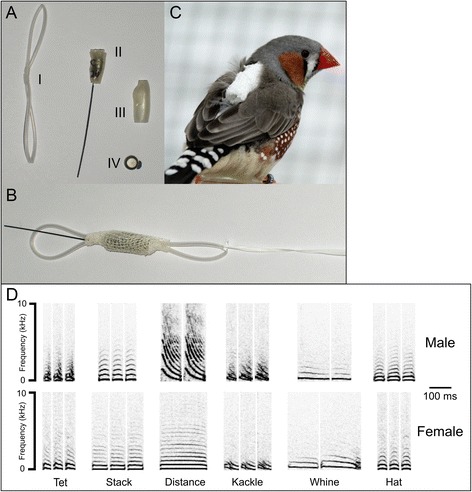Fig. 1.

Tools: telemetry transmitter and repertoire. Top picture: a) Different components of the telemetry transmitter. I) Elastic cord, the upper loop encircles the head and the bottom loop goes around the tail. II) Microphone transmitter body and antenna. III) Transmitter case. IV) 1.45 V battery. b) The assembled backpack. c) Zebra finch equipped with a transmitter. Bottom panel: d) Sonograms of the scored calls of the male and the female from a representative experimental pair (male only: song and introductory syllables are not shown): “Tet”; “Stack”; “Distance”, “Kackle”, “Whine”, “Hat”. Despite many generations of captivity, the repertoire is very similar to the one described by Zann (1996) in wild birds. We added one soft call type, called “Hat”. The meaning and function of this call are yet to be determined, but it may be a modified version of the “Thuks” call used to indicate danger in wild populations [28]
